Opinion & Analysis
Who knows how to fit better than the source?
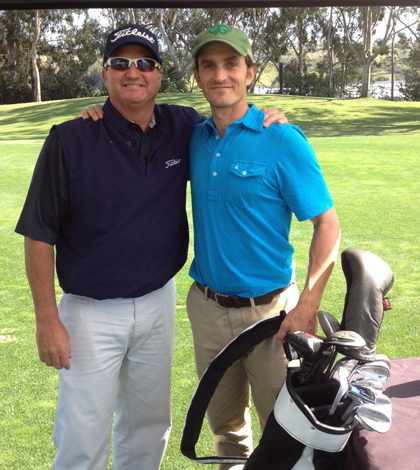
Last week I traveled to seemingly always weather-perfect Carlsbad, Calif., where I did a full club fitting at Titleist’s Oceanside facility.
It was the second time in as many months that I have visited the guys with the cursive logo, the last time being specifically for a Vokey wedge fitting. It also happened to be the second time that I have done a full club fitting.
The first time was with Nike in Spring 2012, or just a few months after swinging the driver and 3-wood for my first time ever. During that fitting, my goal was more about making contact with the ball instead of fine tuning gear for a grooved swing; and they didn’t have a lefty 3-wood at the fitting, so that stick was assumed into my bag without a full test run.
In the 12 months since then I have put in about 1,000 hours of practice and countless rounds. My consistency has improved from something resembling a blindfolded chimp to a precociously self-assured golfer looking to improve upon his 6 handicap, and it was time to get fit for some gear that can help me reach the next level.
Back in February when my Vokey TVD wedges arrived, I had never swung any sticks that were not branded with a swoosh, and was so happy with the Vokey’s performance that I decided to return to Carlsbad to switch out the remaining clubs. When I first went down there, I didn’t realize that it was possible to get fit by the same guys who fit their PGA Tour pros and was blown away by the experience, so decided that going to the source was the best way to make certain that I was getting the best fit for my game.
It was a beautiful April day in Oceanside and my club fitter was Sr. Fitting Analyst Rob Bunn. We had worked together on the wedges so he knew some of my tendencies, which was great as we could get right to work. At the beginning of the experience you change into golf shoes, grab a water (or coffee for guys like me, being a Portland boy) and head out to the pristine range where a section of perfect grass is reserved for you.
They ask you to space your divots out instead of putting them all right next to each other, as they say the grass heals better when it’s individual divots rather than a large section missing. This seems to be contrary to how most grass ranges want you to hit, but I’ll assume they know what they are talking about as they have done this for years and the sod all seems perfect:
To start, I got a hard time from the boys as I hadn’t had time to clean my grooves before flying out from Oregon. They joked with me about it — they knew I understood how important it is for spin to keep my grooves clean. But I had gone straight from course to airport and didn’t have a chance. Walking up to the facility, my last thought had been, “Please don’t look at how dirty those wedges are.”
I warmed up by hitting my gamer clubs, which were Nike Pro Combos with Project X PXI shafts (5 though 9 iron), 21- and 24-degree hybrids with Tour AD stiff shafts and a Mach Speed SQ 10.5 degree Driver with a Project X 6.0 stiff shaft. I’ve had a few Nike drivers, but for some reason that one seems to be the lesser of the evils when mixed with my swing.
I only had 13 clubs (also in the bag is a SeeMore putter, 46 degree Vokey that I use as my pitching wedge and a 50, 54 and 58 degree wedge) because I had taken the Nike 3 wood out a few months ago due to the fact that I hit the 3-hybrid just as far and more consistent. For some reason, I could never get the 3 wood to travel more than about 210 total yards, and it always felt to me like hitting golf balls with an oversized chop-stick. I’ve been testing out a number of different 3 woods, but figured I would wait until this trip to purchase one as I wanted to make sure it fit me. It didn’t make sense to buy a 3 wood a month or two before getting fit for clubs.
My fitting began with the 8 iron. Rob would hand me clubs, and I would hit some balls while he watched the flight and the Doppler radar launch monitor gathered the swing and ball data. Every time he handed me a new stick, I would swing it a few times and all sorts of different results would ring in. It was pretty astonishing. The same swing (or at least extremely similar swings) would produce five push fades or five hooks — or five fat and thin shots or five nice baby draws. It’s amazing how much the lie angle and shaft can make a difference.
We quickly decided that the AP2 712 was the right iron head, and almost as quickly that the KBS Tour stiff shafts stood out as a winner. That combo, along with a standard length and standard lie produced a nice shot nearly every time. When trying the 5 iron, the same results occurred and I was sold on the setup as was Rob. Due to the ball speed and trajectory, he decided that 1 degree strong would be the way to go with all of my irons, too.
Because of the amount of spin my swing put on the ball, he decided that I should go with 4 through 9 irons and one hybrid instead of going my old set up. My 21- and 24-degree hybrids produced very similar shots, so it made sense to me to have one rescue and a 4-iron, as in theory the 4 iron would be easier to control. So the next step was finding the right hybrid.
I was having issues with all of my swings, in part because my gamer irons had been, for some reason, 3 to 4 degrees flatter than I needed. It’s an entirely different topic, but along with an overly flat swing I had ingrained a wrist flip through the impact zone. Now that I was trying out standard lie clubs and have been working on a steeper swing, my miss was to keep that wrist flip in the swing and hook some shots. Rob saw this and after struggling with the hybrids, he decided to switch it up and fit me for a driver. So, we took a detour and started hitting some 913 drivers.
The driver was my No. 1 priority, and main reason for wanting to go to Titleist to get professionally fit. I was happy to see that TPI Oceanside had plenty of Lefty options.
I’ve been struggling with that stick since first hitting one in mid-November 2011, and wanted to take the uncertainty of ill-fitting gear out of the equation. It’s far too easy to blame your sticks if you are uncertain of their characteristics, and blaming gear will never help you improve.
Instead, I NEEDED to find a driver that I KNEW fit me, so I could move on and focus solely on technique and trust it to move forward. My driving has been like Bill Paxton’s acting: almost always sub-par, but on random occasions showing up and surprising everyone. Not good enough and I have been focusing on tee shots in practice.
He first gave me a regular flex shaft, and I sliced a ball over the left fence that seemed way to high to hit over. Then pull-hooked one off the planet. It was pretty obvious I needed a bit less action between my hands and the club head, so we went to stiffer.
I was still lacking in control and missing too far in both directions, so the next step was to invite Titleist Vice President of Tour Promotions Larry Bobka to check out my swing. Larry was able to identify a few things that I could do to improve consistency. I listened to his advice, which happened to be exactly what I was working on back in Portland, and started seeing great results once they put a 913 D3 head on a Speeder VC 7.2 Extra Stiff 44.5 inch shaft that was tipped 0.5 inches.
I knew I didn’t like regular or even stiff shafts, but this extra stiff felt awesome. Even though we went with a 44.5 inch shaft, my ball speed on the range was still between 155 and 160 mph, and Larry said with some form improvements I could see that increase by 5 to 6 mph. That would put me right around the PGA Tour average of 165 mph ball speed with the driver. I know I’ll never be the longest guy by any means, but if I can get my tee shots to PGA Tour average then I know I will be able to keep up with the crowd.
I hit a number of drives with this setup and was very happy with the results. It seemed like the perfect fit. Now the goal was to find a 3 wood and hybrid to fill the final two gaps in the bag.
The 3 wood wasn’t too tough now that we knew more about my swing via the driver fitting. Rob went with a couple of options before landing on the 913F D2 (15 degrees) with an extra stiff Diamana White Board Plus 82 shaft that was 0.5 inches under standard length. We tipped its shaft 0.5 inches as well, and it felt great.
I loved the control that I had with the extra stiff shaft, because it felt like the club head was staying with me no matter how hard or easy I wanted to swing. The numbers were good, too, as I was getting about 140 to 145 mph of ball speed. It was hard to tell what distance things were flying because it was into a stiff wind, but the shot shape was nice and the ball speed was what they were looking for so all was well.
The final step was the hybrid. Now that I was more confident and my swing was under control, it was much easier to find the right fit. Just a few options in, we went with the 913H D3 (19 degrees) with a Diamana Blue Board Plus 82 extra stiff shaft at a standard length. It was odd, but the standard length hybrid fit better, even though the driver and 3 wood were best fit at 0.5 inches shorter than standard.
I never would have guessed at most of these settings, but that is why I went to the source to figure out what I should be hitting. When I last was fit for clubs more than a year ago I had been swinging woods and drivers for barely four months and had not come close to grooving a swing. In fact, during my original fitting in early 2012 my main goal was just to hit the ball — I wasn’t thinking about shot shape and control. I can imagine that it was very hard to fit me into anything, as my swing was so new.
A lot of time and practice has happened since that fitting and it is crucial for performance to stay on top of your gear. I am very excited about getting these new sticks and cannot wait to start practicing with them. There will definitely be an adjustment period as the lies, length, weights, etc. are different, but after a week or two of grinding on the course and range the changes will hopefully start to pay off.
The next post will be about the launch monitor specifics between my current clubs and the new Titleists that will arrive soon. We shall get to the bottom of exactly how much periodically getting fit for sticks can positively change your game through some concrete data.
To wrap things up, here’s “What’s in the bag.”
Driver: Titleist 913 D3 (9.5 degrees)
Setting: D4
Shaft: Fujikura Motore Speeder VC 7.2 X (Tipped 0.5 inches, 0.5 inches under standard)
3 Wood: Titleist 913F D2 (15 degrees)
Setting: D4
Shaft: Mitsubishi Rayon Diamana White Board Plus 82X (Tipped 0.5 inches, 0.5 inches under standard)
Hybrid: Titleist 913H D3 (19 degrees)
Shaft: Mitsubishi Rayon Diamana Blue Board plus 82X
Irons: Titleist AP2 (4-9, bent 1 degree strong)
Shafts: KBS Tour (S-Flex)
Wedges: Titleist Vokey SM4 (46-08 and 50-08), Vokey TVD M Grind (54 and 58)
Shafts: Dynamic Gold S200
Putter: SeeMore mFGP
Ball: Titleist Pro V1X
Editor’s Note: The cost of an individual fitting (metal woods, irons or wedges) at TPI Oceanside is $200. A full bag fitting is $500. All equipment is sold separately through authorized Titleist accounts.
- LIKE4
- LEGIT0
- WOW0
- LOL0
- IDHT0
- FLOP0
- OB0
- SHANK0
19th Hole
Vincenzi’s LIV Golf Singapore betting preview: Course specialist ready to thrive once again

After another strong showing in Australia, LIV Golf will head to Sentosa Golf Club in Singapore looking to build off of what was undoubtedly their best event to date.
Sentosa Golf Club sits on the southern tip of Singapore and is one of the most beautiful courses in the world. The course is more than just incredible scenically; it was also rated 55th in Golf Digest’s top-100 courses in 2022-2023 and has been consistently regarded as one of the best courses in Asia. Prior to being part of the LIV rotation, the course hosted the Singapore Open every year since 2005.
Sentosa Golf Club is a par 71 measuring 7,406 yards. The course will require precise ball striking and some length off the tee. It’s possible to go low due to the pristine conditions, but there are also plenty of hazards and difficult spots on the course that can bring double bogey into play in a hurry. The Bermudagrass greens are perfectly manicured, and the course has spent millions on the sub-air system to keep the greens rolling fast. I spoke to Asian Tour player, Travis Smyth, who described the greens as “the best [he’s] ever played.”
Davis Love III, who competed in a Singapore Open in 2019, also gushed over the condition of the golf course.
“I love the greens. They are fabulous,” the 21-time PGA Tour winner said.
Love III also spoke about other aspects of the golf course.
“The greens are great; the fairways are perfect. It is a wonderful course, and it’s tricky off the tee.”
“It’s a long golf course, and you get some long iron shots. It takes somebody hitting it great to hit every green even though they are big.”
As Love III said, the course can be difficult off the tee due to the length of the course and the trouble looming around every corner. It will take a terrific ball striking week to win at Sentosa Golf Club.
In his pre-tournament press conference last season, Phil Mickelson echoed many of the same sentiments.
“To play Sentosa effectively, you’re going to have a lot of shots from 160 to 210, a lot of full 6-, 7-, 8-iron shots, and you need to hit those really well and you need to drive the ball well.”
Golfers who excel from tee to green and can dial in their longer irons will have a massive advantage this week.
Stat Leaders at LIV Golf Adelaide:
Fairways Hit
1.) Louis Oosthuizen
2.) Anirban Lahiri
3.) Jon Rahm
4.) Brendan Steele
5.) Cameron Tringale
Greens in Regulation
1.) Brooks Koepka
2.) Brendan Steele
3.) Dean Burmester
4.) Cameron Tringale
5.) Anirban Lahiri
Birdies Made
1.) Brendan Steele
2.) Dean Burmester
3.) Thomas Pieters
4.) Patrick Reed
5.) Carlos Ortiz
LIV Golf Individual Standings:
1.) Joaquin Niemann
2.) Jon Rahm
3.) Dean Burmester
4.) Louis Oosthuizen
5.) Abraham Ancer
LIV Golf Team Standings:
1.) Crushers
2.) Legion XIII
3.) Torque
4.) Stinger GC
5.) Ripper GC
LIV Golf Singapore Picks
Sergio Garcia +3000 (DraftKings)
Sergio Garcia is no stranger to Sentosa Golf Club. The Spaniard won the Singapore Open in 2018 by five strokes and lost in a playoff at LIV Singapore last year to scorching hot Talor Gooch. Looking at the course setup, it’s no surprise that a player like Sergio has played incredible golf here. He’s long off the tee and is one of the better long iron players in the world when he’s in form. Garcia is also statistically a much better putter on Bermudagrass than he is on other putting surfaces. He’s putt extremely well on Sentosa’s incredibly pure green complexes.
This season, Garcia has two runner-up finishes, both of them being playoff losses. Both El Camaleon and Doral are courses he’s had success at in his career. The Spaniard is a player who plays well at his tracks, and Sentosa is one of them. I believe Sergio will get himself in the mix this week. Hopefully the third time is a charm in Singapore.
Paul Casey +3300 (FanDuel)
Paul Casey is in the midst of one of his best seasons in the five years or so. The results recently have been up and down, but he’s shown that when he’s on a golf course that suits his game, he’s amongst the contenders.
This season, Casey has finishes of T5 (LIV Las Vegas), T2 (LIV Hong Kong), and a 6th at the Singapore Classic on the DP World Tour. At his best, the Englishman is one of the best long iron players in the world, which makes him a strong fit for Sentosa. Despite being in poor form last season, he was able to fire a Sunday 63, which shows he can low here at the course.
It’s been three years since Casey has won a tournament (Omega Dubai Desert Classic in 2021), but he’s been one of the top players on LIV this season and I think he can get it done at some point this season.
Mito Pereira +5000 (Bet365)
Since Mito Pereira’s unfortunate demise at the 2022 PGA Championship, he’s been extremely inconsistent. However, over the past few months, the Chilean has played well on the International Series as well as his most recent LIV start. Mito finished 8th at LIV Adelaide, which was his best LIV finish this season.
Last year, Pereira finished 5th at LIV Singapore, shooting fantastic rounds of 67-66-66. It makes sense why Mito would like Sentosa, as preeminent ball strikers tend to rise to the challenge of the golf course. He’s a great long iron player who is long and straight off the tee.
Mito has some experience playing in Asia and is one of the most talented players on LIV who’s yet to get in the winner’s circle. I have questions about whether or not he can come through once in contention, but if he gets there, I’m happy to roll the dice.
Andy Ogletree +15000 (DraftKings)
Andy Ogletree is a player I expected to have a strong 2024 but struggled early in his first full season on LIV. After failing to crack the top-25 in any LIV event this year, the former U.S. Amateur champion finally figured things out, finished in a tie for 3rd at LIV Adelaide.
Ogletree should be incredible comfortable playing in Singapore. He won the International Series Qatar last year and finished T3 at the International Series Singapore. The 26-year-old was arguably the best player on the Asian Tour in 2023 and has been fantastic in the continent over the past 18 months.
If Ogletree has indeed found form, he looks to be an amazing value at triple-digit odds.
- LIKE3
- LEGIT3
- WOW1
- LOL2
- IDHT0
- FLOP2
- OB0
- SHANK0
Opinion & Analysis
Ryan: Lessons from the worst golf instructor in America
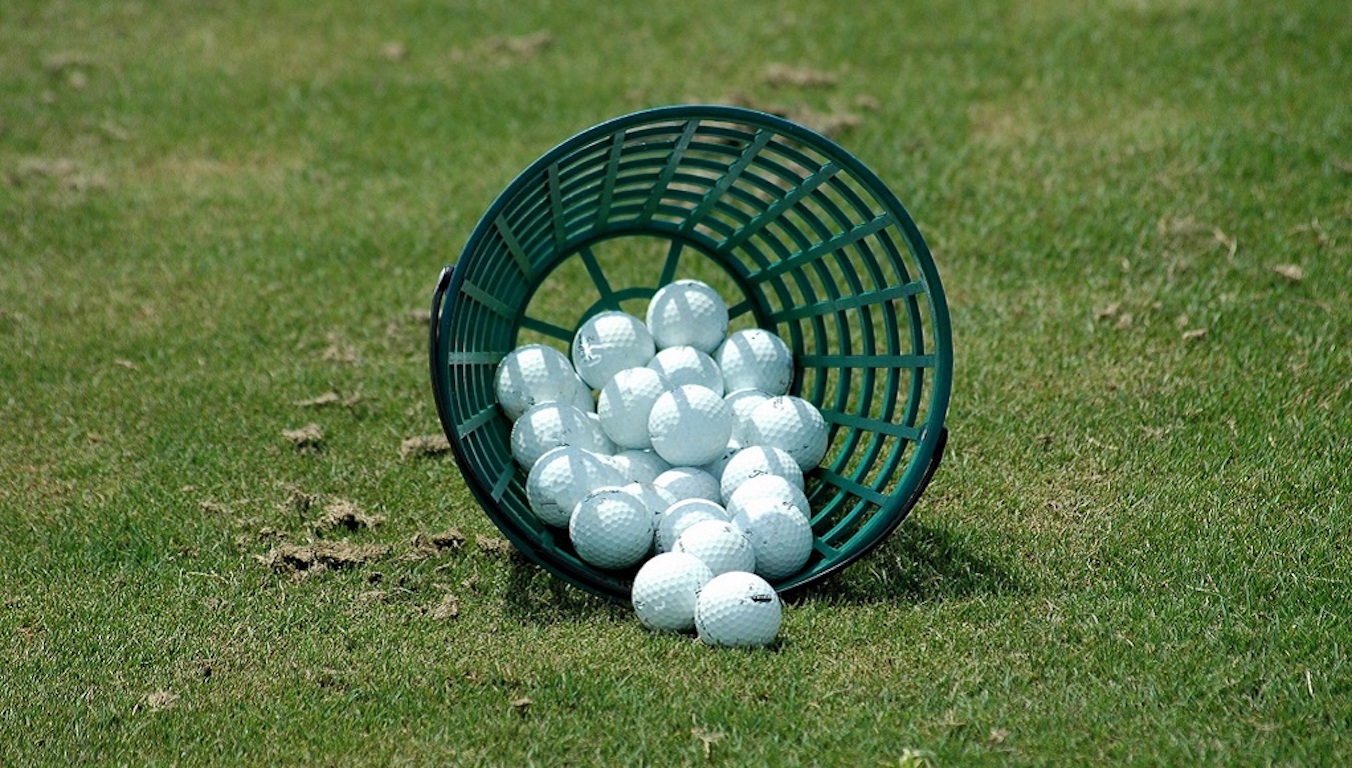
In Tampa, there is a golf course that boasts carts that do not work, a water range, and a group of players none of which have any chance to break 80. The course is overseen by a staff of crusty men who have succeeded at nothing in life but ending up at the worst-run course in America. However, this place is no failure. With several other local courses going out of business — and boasting outstanding greens — the place is booked full.
While I came for the great greens, I stayed to watch our resident instructor; a poor-tempered, method teacher who caters to the hopeless. At first, it was simply hilarious. However, after months of listening and watching, something clicked. I realized I had a front-row seat to the worst golf instructor in America.
Here are some of my key takeaways.
Method Teacher
It is widely accepted that there are three types of golf instructors: system teachers, non-system teachers, and method teachers. Method teachers prescribe the same antidote for each student based on a preamble which teachers can learn in a couple day certification.
Method teaching allows anyone to be certified. This process caters to the lowest caliber instructor, creating the illusion of competency. This empowers these underqualified instructors with the moniker of “certified” to prey on the innocent and uninformed.
The Cult of Stack and Jilt
The Stack and Tilt website proudly boasts, “A golfer swings his hands inward in the backswing as opposed to straight back to 1) create power, similar to a field goal kicker moving his leg in an arc and 2) to promote a swing that is in-to-out, which produces a draw (and eliminates a slice).”
Now, let me tell you something, there is this law of the universe which says “energy can either be created or destroyed,” so either these guys are defying physics or they have no idea what they are taking about. Further, the idea that the first move of the backswing determines impact is conjecture with a splash of utter fantasy.
These are the pontifications of a method — a set of prescriptions applied to everyone with the hope of some success through the placebo effect. It is one thing for a naive student to believe, for a golf instructor to drink and then dispel this Kool-Aid is malpractice.
Fooled by Randomness
In flipping a coin, or even a March Madness bet, there is a 50-50 chance of success. In golf, especially for new players, results are asymmetric. Simply put: Anything can happen. The problem is that when bad instructors work with high handicappers, each and every shot gets its own diagnosis and prescription. Soon the student is overwhelmed.
Now here’s the sinister thing: The overwhelming information is by design. In this case, the coach is not trying to make you better, they are trying to make you reliant on them for information. A quasi Stockholm syndrome of codependency.
Practice
One of the most important scientists of the 20th century was Ivan Pavlov. As you might recall, he found that animals, including humans, could be conditioned into biological responses. In golf, the idea of practice has made millions of hackers salivate that they are one lesson or practice session from “the secret.”
Sunk Cost
The idea for the worst golf instructor is to create control and dependency so that clients ignore the sunk cost of not getting better. Instead, they are held hostage by the idea that they are one lesson or tip away from unlocking their potential.
Cliches
Cliches have the effect of terminating thoughts. However, they are the weapon of choice for this instructor. Add some hyperbole and students actually get no information. As a result, these players couldn’t play golf. When they did, they had no real scheme. With no idea what they are doing, they would descend into a spiral of no idea what to do, bad results, lower confidence, and running back to the lesson tee from more cliches.
The fact is that poor instruction is about conditioning players to become reliant members of your cult. To take away autonomy. To use practice as a form of control. To sell more golf lessons not by making people better but through the guise that without the teacher, the student can never reach their full potential. All under the umbrella of being “certified” (in a 2-day course!) and a melee of cliches.
This of course is not just happening at my muni but is a systemic problem around the country and around the world, the consequences of which are giving people a great reason to stop playing golf. But hey, at least it’s selling a lot of golf balls…
- LIKE18
- LEGIT2
- WOW0
- LOL4
- IDHT1
- FLOP4
- OB1
- SHANK23
19th Hole
Vincenzi’s 2024 Zurich Classic of New Orleans betting preview

The PGA TOUR heads to New Orleans to play the 2023 Zurich Classic of New Orleans. In a welcome change from the usual stroke play, the Zurich Classic is a team event. On Thursday and Saturday, the teams play best ball, and on Friday and Sunday the teams play alternate shot.
TPC Louisiana is a par 72 that measures 7,425 yards. The course features some short par 4s and plenty of water and bunkers, which makes for a lot of exciting risk/reward scenarios for competitors. Pete Dye designed the course in 2004 specifically for the Zurich Classic, although the event didn’t make its debut until 2007 because of Hurricane Katrina.
Coming off of the Masters and a signature event in consecutive weeks, the field this week is a step down, and understandably so. Many of the world’s top players will be using this time to rest after a busy stretch.
However, there are some interesting teams this season with some stars making surprise appearances in the team event. Some notable teams include Patrick Cantlay and Xander Schauffele, Rory McIlroy and Shane Lowry, Collin Morikawa and Kurt Kitayama, Will Zalatoris and Sahith Theegala as well as a few Canadian teams, Nick Taylor and Adam Hadwin and Taylor Pendrith and Corey Conners.
Past Winners at TPC Louisiana
- 2023: Riley/Hardy (-30)
- 2022: Cantlay/Schauffele (-29)
- 2021: Leishman/Smith (-20)
- 2019: Palmer/Rahm (-26)
- 2018: Horschel/Piercy (-22)
- 2017: Blixt/Smith (-27)
2024 Zurich Classic of New Orleans Picks
Tom Hoge/Maverick McNealy +2500 (DraftKings)
Tom Hoge is coming off of a solid T18 finish at the RBC Heritage and finished T13 at last year’s Zurich Classic alongside Harris English.
This season, Hoge is having one of his best years on Tour in terms of Strokes Gained: Approach. In his last 24 rounds, the only player to top him on the category is Scottie Scheffler. Hoge has been solid on Pete Dye designs, ranking 28th in the field over his past 36 rounds.
McNealy is also having a solid season. He’s finished T6 at the Waste Management Phoenix Open and T9 at the PLAYERS Championship. He recently started working with world renowned swing coach, Butch Harmon, and its seemingly paid dividends in 2024.
Keith Mitchell/Joel Dahmen +4000 (DraftKings)
Keith Mitchell is having a fantastic season, finishing in the top-20 of five of his past seven starts on Tour. Most recently, Mitchell finished T14 at the Valero Texas Open and gained a whopping 6.0 strokes off the tee. He finished 6th at last year’s Zurich Classic.
Joel Dahmen is having a resurgent year and has been dialed in with his irons. He also has a T11 finish at the PLAYERS Championship at TPC Sawgrass which is another Pete Dye track. With Mitchell’s length and Dahmen’s ability to put it close with his short irons, the Mitchell/Dahmen combination will be dangerous this week.
Taylor Moore/Matt NeSmith +6500 (DraftKings)
Taylor Moore has quickly developed into one of the more consistent players on Tour. He’s finished in the top-20 in three of his past four starts, including a very impressive showing at The Masters, finishing T20. He’s also finished T4 at this event in consecutive seasons alongside Matt NeSmith.
NeSmith isn’t having a great 2024, but has seemed to elevate his game in this format. He finished T26 at Pete Dye’s TPC Sawgrass, which gives the 30-year-old something to build off of. NeSmith is also a great putter on Bermudagrass, which could help elevate Moore’s ball striking prowess.
- LIKE8
- LEGIT3
- WOW1
- LOL1
- IDHT0
- FLOP3
- OB1
- SHANK2
-

 19th Hole2 weeks ago
19th Hole2 weeks agoJustin Thomas on the equipment choice of Scottie Scheffler that he thinks is ‘weird’
-

 19th Hole2 weeks ago
19th Hole2 weeks ago‘Absolutely crazy’ – Major champ lays into Patrick Cantlay over his decision on final hole of RBC Heritage
-

 19th Hole3 weeks ago
19th Hole3 weeks agoReport: LIV Golf identifies latest star name they hope to sign to breakaway tour
-

 19th Hole3 weeks ago
19th Hole3 weeks agoNeal Shipley presser ends in awkward fashion after reporter claims Tiger handed him note on 8th fairway
-

 19th Hole3 weeks ago
19th Hole3 weeks agoBrandel Chamblee has ‘no doubt’ who started the McIlroy/LIV rumor and why
-

 19th Hole1 week ago
19th Hole1 week agoLET pro gives detailed financial breakdown of first week on tour…and the net result may shock you
-
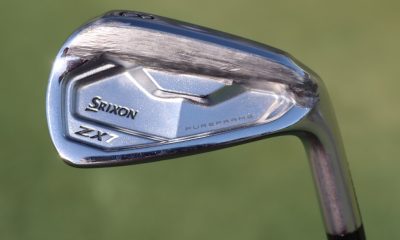
 Equipment3 weeks ago
Equipment3 weeks agoJason Day on his recent switch into Srixon ZX5 and ZX7 Mk II irons
-

 19th Hole4 days ago
19th Hole4 days agoGary Player claims this is what ‘completely ruined’ Tiger Woods’ career

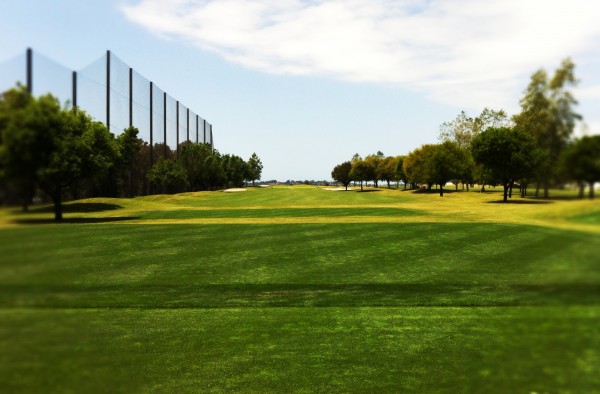
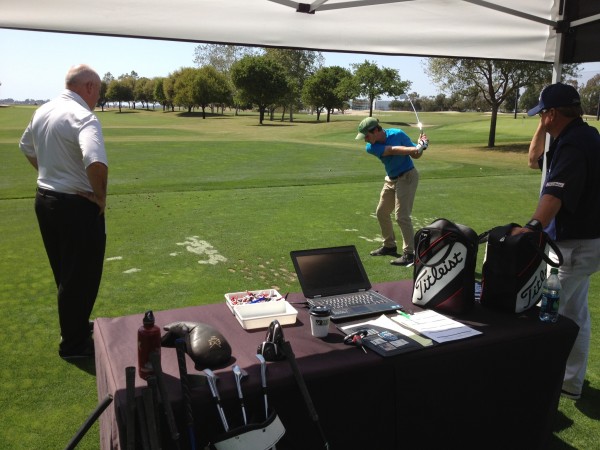


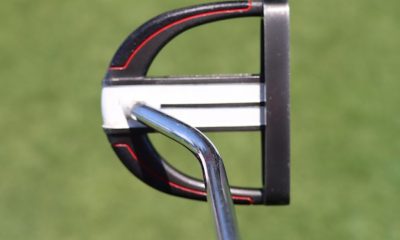

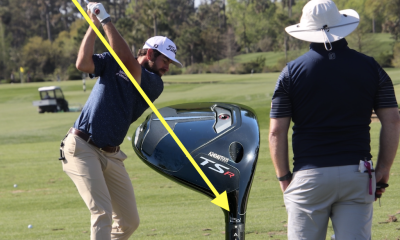



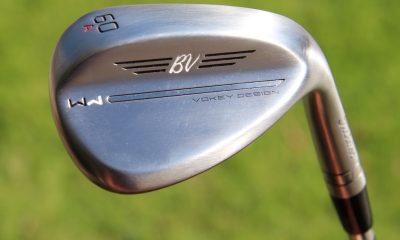

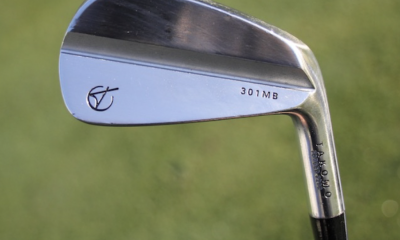










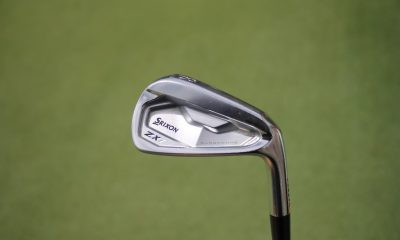

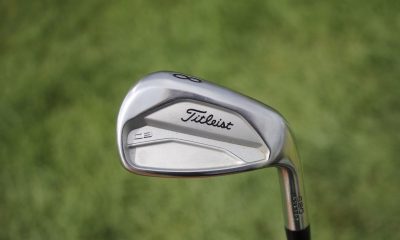

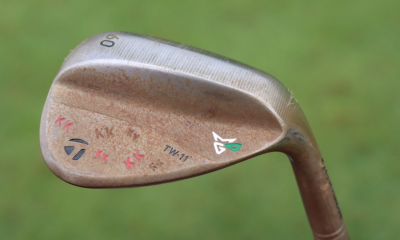

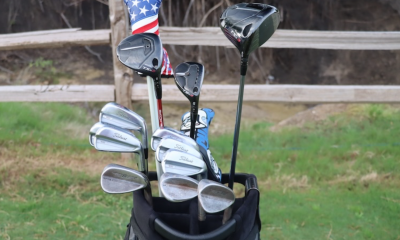

David
May 3, 2013 at 8:16 pm
Dan,
Nice that you got to go to the source! What is missing now is a Scotty Cameron Putter!!!! If your going to get the best gear you need to go all the way 🙂
Pingback: Who knows how to fit better than the source? – GolfWRX | Golf Grip Instruction
Mike
May 2, 2013 at 5:19 pm
Nice write up, Dan. I’m interested in your bag. Is it custom made? Also, all Titleist but no Scotty?
Dan Plan
May 3, 2013 at 7:39 pm
Hi Mike,
It’s a custom Vokey bag but I believe that you can order one online. I really like my SeeMore putter so didn’t see a reason to switch over.
Thanks!
Dan
Nick
May 2, 2013 at 3:10 pm
Titleist is the bomb. Got fit by them a year ago and saw immediete improvement. The change in my driver trajectory put ten yards on my drive immedietly with probably 15 percent more fairways. Massive game changer for me. While I did not see (or frankly desire) distance gains with my irons, the “cone” of my misses narrowed considerably. This was seen literally the second and third rounds I played with my new set (I think the pressure of playing with a new set and the overwhelming desire to see immediate improvmeent dooms the first round out with new equipment).
Rich
May 2, 2013 at 2:32 pm
Thanks for the review on the fitting. I live in socal and was wondering about getting fitted at Titleist compared to a Golf Smith or Roger Dunn. I was wondering about the cost as well.
Daniel
May 2, 2013 at 1:31 pm
I bet that was awesome getting all that info about your clubs and your swing, but most importantly being able to trust it since you were “at the source.”
Can a reader ask how much that fitting experience costs?
Zak Kozuchowski
May 2, 2013 at 5:22 pm
The cost of an individual fitting (metal woods, irons or wedges) at TPI Oceanside is $200. A full bag fitting is $500. All equipment is sold separately through authorized Titleist accounts.
You can learn more here — http://www.titleist.com/golf-club-fitting/
– Zak